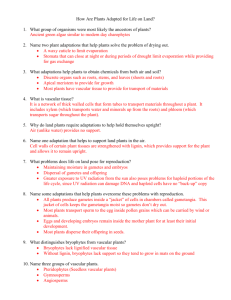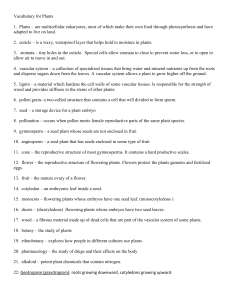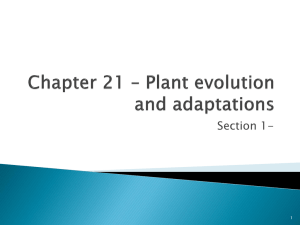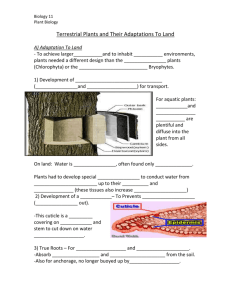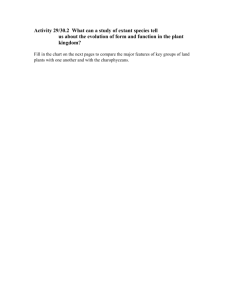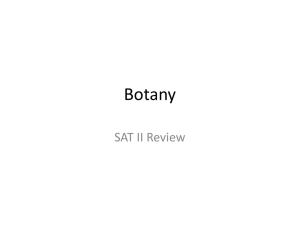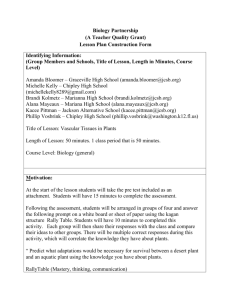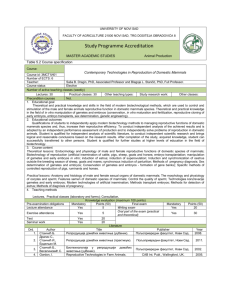Unit 4 Notes #3 :Terrestrial Plants and Their Adaptations To Land
advertisement
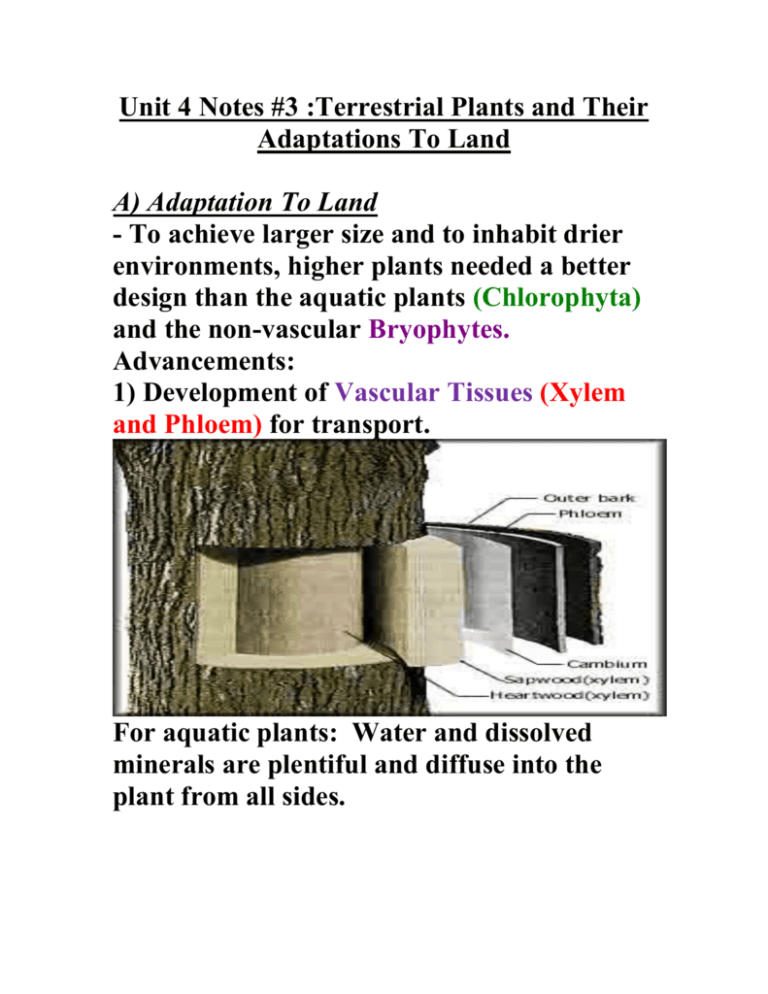
Unit 4 Notes #3 :Terrestrial Plants and Their Adaptations To Land A) Adaptation To Land - To achieve larger size and to inhabit drier environments, higher plants needed a better design than the aquatic plants (Chlorophyta) and the non-vascular Bryophytes. Advancements: 1) Development of Vascular Tissues (Xylem and Phloem) for transport. For aquatic plants: Water and dissolved minerals are plentiful and diffuse into the plant from all sides. On land: Water is scarce, often found only underground. Plants had to develop special tissues to conduct water from ground level up to their stems and leaves (these tissues also increase rigidity)- XYLEM 2) Development of a Cuticle – To Prevents Desiccation (drying out). -This cuticle is a waxy covering on leaves and stem to cut down on water evaporation. 3) True Roots – For absorption and anchorage. -Absorb water and minerals from the soil. -Also for anchorage, no longer buoyed up by water. 4) Protective Jacket for Gametes (sex cells) -Keep gametes from drying out Example: - Male sperm cell packaged up in pollen capsule. - Ovules formed and protected in ovary of female part. 5) Protection for Embryo (Developing Plant) -Example: Fruit- keeps embryo from drying out, also promotes dispersal by passing through the digestive tract of a given animal. -Also a proper SEED - embryo with food, and seed coat. 6) Mechanisms for the dispersal of gametes and embryos. In water: Gametes and embryos swim or float in water currents. On land: Use wind or rely on certain insects or other animals for dispersal of male gametes (pollen). - After pollination and fertilization, plant still need to rely on animals or wind to disperse their embryos (enclosed in seed) Animal: Eat fruit discard or defecate seed adequate distance away. Burrs or hooks catch in the fur and fall elsewhere. B) Vascular Plants : The Tracheophytes Kingdom: Plantae Phylum: Tracheophyta Ferns – Subphylum : Pteridophyta The First Vascular Plants Pigments: 1) Chlorophyll a 2) Chlorophyll b Habitat: 1) Tropical and Temperate Rainforests 2) Have evolved many adaptations so that they are no longer limited to totally wet environments. They are still limited to environments that are at least seasonally wet, as they use flagellated sperm to swim to the eggs. Adaptations: 1) Have vascular tissues. a) Xylem: Tissue that includes dead Tracheid cells (hence Tracheophyta), these cells transports water and dissolved nutrients from roots to all parts of the plant. These cells have thick cell walls and provide structural support for the plant. b) Phloem: Living cells that transport nutrients and products of photosynthesis to all parts of the plant. 2) Strong true roots coming off of rhizomes (underground runners) 3) True vascular leaves (fronds) Alternation Of Generations In Ferns: - Unlike mosses, the Sporophyte (2N) is the dominant generation and the gametophyte (1N) is minimized.
